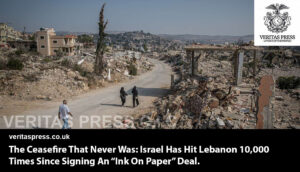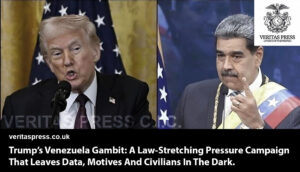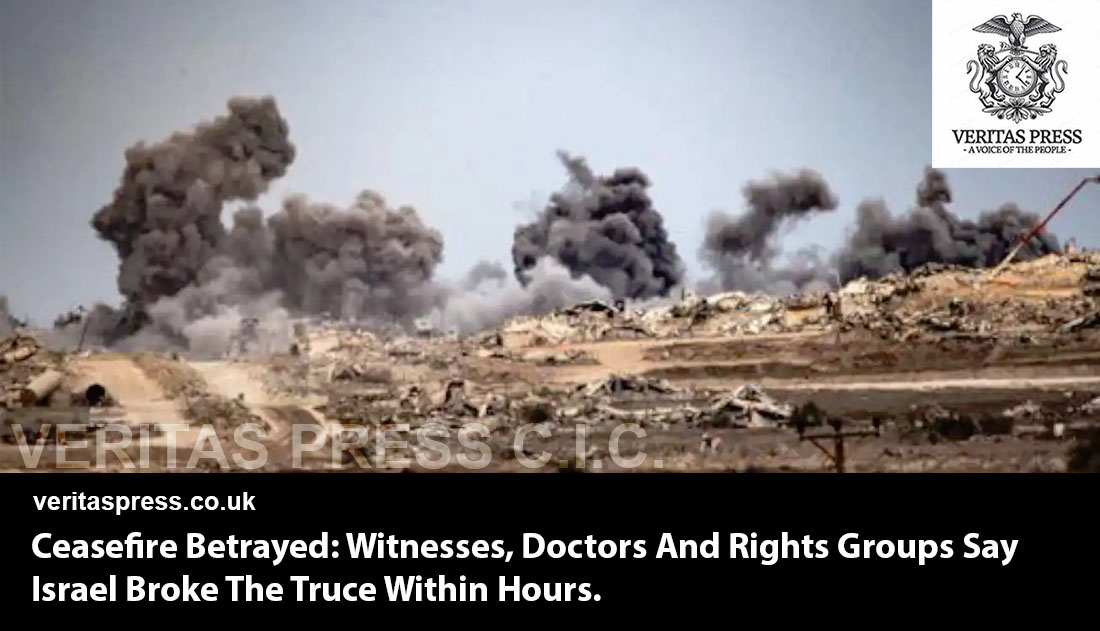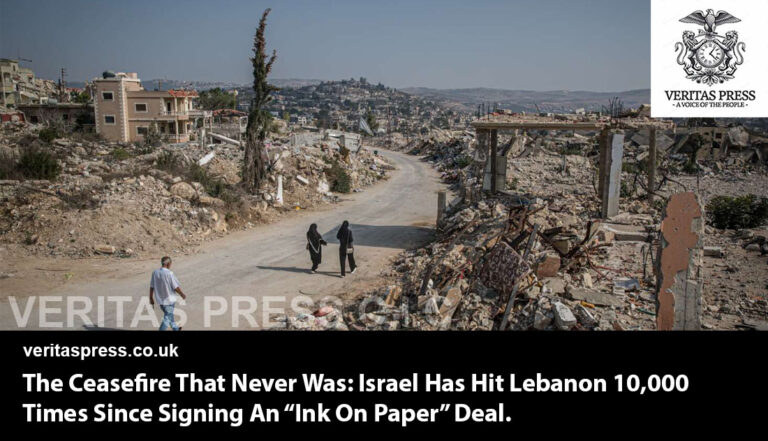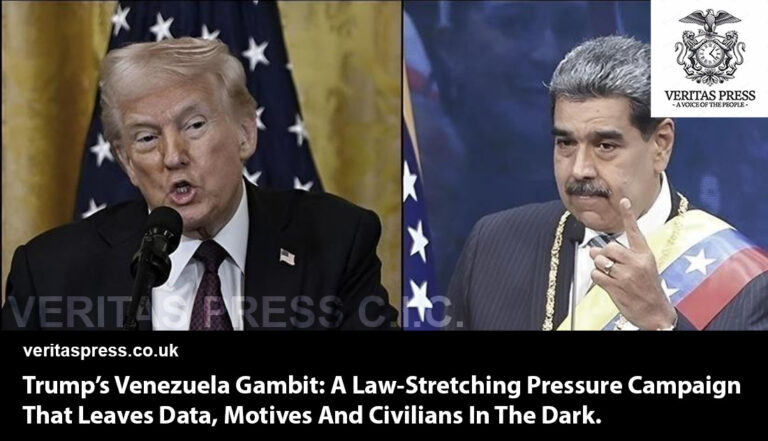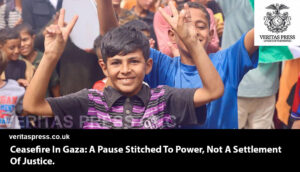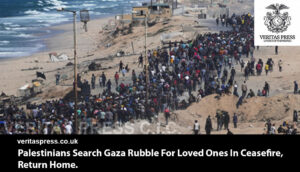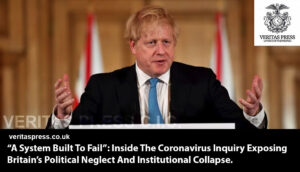GAZA CITY, 10 OCTOBER 2025 — DAY 735 OF THE WAR – Only hours after Israel’s cabinet ratified a U.S.-brokered ceasefire and hostage-exchange framework, Gaza residents, medics and human-rights groups say Israeli forces opened fire again, with airstrikes, helicopter gunfire and artillery hitting eastern Gaza City and northern Khan Younis. The immediate breach, captured by local reporters and rescue teams, exposes what survivors and rights monitors call a deliberate pattern: pause the diplomacy on paper, continue the bombing in practice.
Below is a tightly sourced, evidence-led investigation drawing on eyewitness testimony, doctors’ accounts, civil defence reports, NGO analysis and regional reporting to explain what happened, who said what, and why this matters.
What Happened, The Facts Reported On The Ground:
- Early morning strikes after ratification. Hours after Israel approved a ceasefire framework, Al Jazeera correspondents and Gaza Civil Defence teams reported aerial raids east of Gaza City supported by artillery and helicopter fire; warplanes also struck northern Khan Younis while reconnaissance drones remained over the city. Local medics told Al Jazeera their hospitals had recovered bodies from helicopter and air attacks.
- A house in Al-Sabra was levelled before the pause. Late Thursday evening, in the immediate run-up to the ratification, an airstrike levelled a home in Gaza City’s Al-Sabra neighbourhood; local reporters and rescue crews said four people were confirmed killed and dozens were missing under rubble when the ceasefire was announced. Social and rescue footage shared by local outlets and journalists shows frantic pull-out attempts by civil defence teams.
- Medical toll and blocked access. Medical sources in Gaza hospitals recorded dozens killed across the Strip in the 24 hours before the pause; civil defence teams warned that drone surveillance and ongoing strikes blocked rescue access to many impact sites. Al Jazeera’s reporting highlighted hospitals recovering bodies after attack helicopters struck east of Gaza City.
- International monitoring plans. The U.S. will deploy roughly 200 troops to Israel as part of a multinational effort to support and monitor the ceasefire’s implementation and coordinate humanitarian access, a move that U.S. and regional officials say is about oversight but which critics call symbolic in the face of immediate violations.
Eyewitnesses, Locals And Journalists, Direct Testimony:
The most compelling evidence of intent and impact comes from the people who lived the dawn:
- “We were told the bombing would stop, that it was safe to rest. Then the sky exploded again,” a displaced mother in Khan Yunis, speaking to Al Jazeera about the early-morning bombardment that followed the ratification. Her quote captures the shock and disbelief in the south as strikes resumed despite formal announcements.
- “Sounds of fighter jets were a sign Israel is ‘not fully’ implementing the ceasefire.” Al Jazeera local live reporting from Gaza City described civil defence crews hearing and seeing strikes while the truce text was being implemented, undercutting the official narrative of an immediate halt.
- Rescue-worker testimony (civil defence): teams could not reach several strike sites because of lingering drone and helicopter activity, a practical, on-the-ground impediment to rescue and casualty verification. Al Jazeera reported civil defence warnings urging civilians not to return to vacated positions until the withdrawal was officially complete.
- Visual and on-the-ground reporting (video and stills) posted by local journalists and humanitarian workers from Sabra show collapsed structures and rescue attempts; multiple social videos circulating on the day show bodies and heavy rubble consistent with the accounts of a house being struck on the eve of the truce announcement.
Doctors And Hospitals, What Medics Reported:
- Al-Ahli and other hospital sources reported recovering bodies after helicopter strikes east of Gaza City and said medical teams were overwhelmed by casualties and by the logistical impossibility of reaching certain blast sites while aerial surveillance and strikes persisted. That pattern, medical sources corroborating both the damage and the impossibility of safe rescue, was central to Al Jazeera’s live coverage.
- Doctors working in field hospitals and clinics have repeatedly warned that aerial surveillance and intermittent strikes prevent ambulances and civil defence from evacuating the wounded, a practical constraint that turns battlefield decisions into medical-ethical crises. (See live reporting and medics’ remarks in Al Jazeera coverage.)
Activists And Rights Organisations, Interpretation And Accusation:
- Human Rights Watch (Omar Shakir): HRW’s Israel/Palestine director has repeatedly warned governments not to treat political frameworks as substitutes for accountability, arguing states must act to halt atrocities rather than depend on negotiated plans that lack enforcement mechanisms. Omar Shakir has called for immediate measures, including arms restrictions and ICC support, to prevent further harm. His office’s recent statements frame breaches like this as foreseeable if enforcement is weak.
- Palestinian Centre for Human Rights (Raji Sourani) and other Palestinian NGOs: senior Palestinian rights lawyers and campaigners have described the strike patterns as evidence of systemic impunity and as political theatre that allows occupation forces to maintain pressure while extracting concessions. Raji Sourani and colleagues have publicly warned that repeated breaches show the truce would not be respected without independent enforcement.
- Hamas spokespersons and leadership have publicly expressed scepticism, warning that the resistance will remain vigilant until every soldier leaves and every prisoner is free, language that reflects both political resolve and the widespread mistrust among civilians. Reuters and other outlets reported Hamas leaders saying mediators had provided guarantees, while also flagging mistrust about implementation.
Analysts And Former Officials, Motive, Method, Pattern:
- Pattern analysis: Military analysts and human-rights monitors described Israel’s approach as a tactical use of ceasefires, pauses that create diplomatic cover while permitting continued tactical pressure. This pattern has precedent: observers pointed to previous truces that were short-lived and used tactically to regroup or recalibrate targeting. Al Jazeera and Reuters reporting and commentaries have repeatedly flagged this pattern.
- Political calculation: Israeli domestic politics matters. Analysts told major outlets that Netanyahu’s government faces competing pressures from far-right ministers and security institutions; some analysts see the early strikes as politically calibrated, a signal to domestic hardliners that tactical options remain even as the prime minister signs on to an agreement. (Analysis and quotes summarised in Guardian and Reuters coverage.)
- U.S. role and limits: U.S. officials framed their 200-troop deployment as a monitoring and humanitarian-coordination mission, but analysts and rights groups say the deployment has no direct enforcement authority inside Gaza, making it unlikely to stop on-the-ground violations in real time. Reuters and AP reporting detail the deployment while human-rights groups frame U.S. involvement as insufficient to guarantee compliance.
What The Immediate Evidence Implies, Investigative Assessment:
- The truce lacked independent enforcement teeth. The factual record from the dawn of ratification shows strikes continuing while the text required suspension of aerial and artillery operations over withdrawn zones. Without a neutral, on-site enforcement mechanism with authority to stop violations, the arrangement risked being performative and fragile. The U.S. troop deployment is a monitoring and coordination measure, not a policing force inside Gaza, which limits real-time intervention.
- Operational practice overrode diplomatic language. The reports of continued drone surveillance, helicopter and artillery fire while the truce clock began indicate operational priorities trumped the documented legal commitments of the agreement. That disconnect, between signed obligations and battlefield practice, is consistent with prior episodes where pauses served strategic ends.
- Civilian protection mechanisms were absent or ineffectual. Civil defence teams and medics could not access some strike sites because aerial activity continued. That directly contradicts the ceasefire’s humanitarian clauses and shows how violations become, in practice, barriers to life-saving care.
- Political incentives favoured ambiguity. The Israeli leadership’s decision to ratify, while some strike elements continued, suggests a dual strategy: secure the diplomatic gains (hostage return, international legitimisation) while retaining military freedom of action. This political hedging is what analysts warned about: a ceasefire in name, pressure and control in reality.
- Accountability gap sustains the cycle. Rights groups such as HRW and Palestinian legal experts stress the need for an independent investigation and accountability. Repeated breaches without consequences create a structural impunity that turns ceasefires into cyclical interludes rather than steps toward justice or durable peace.
Voices to watch (selected sources and spokespeople)
- Al Jazeera correspondents and Gaza civil defence teams’ immediate eyewitness reporting and medics’ accounts.
- Local rescue workers / displaced residents in Khan Yunis and Gaza City provided numerous on-the-ground quotes in Al Jazeera reporting describing panic and betrayal.
- Human Rights Watch (Omar Shakir) — calls for enforcement, arms restrictions and ICC engagement to prevent further atrocities.
- Palestinian Centre for Human Rights (Raji Sourani) — legal framing of repeated breaches as evidence of impunity, repeated public statements and op-eds in regional press.
- Reuters / AP / The Guardian — reporting on the ceasefire framework, U.S. troop deployment and political context.
Recommended Next Steps For Journalists And Investigators:
- Map violations to time stamps and geolocations. Cross-reference local reporting, social video, rescue team logs and hospital intake times to build a minute-by-minute map of where strikes occurred relative to the ceasefire ratification. (This article cites initial live reporting; a verification team should collect original metadata for social posts and hospital logs.)
- Secure independent medical confirmation. Interview hospital directors (e.g., al-Ahli and other major Gaza facilities listed in Al Jazeera coverage) for casualty lists, ambulance logs, and statements about denied or delayed access due to continued aerial operations.
- Obtain military logs and statements. Request detailed operational timelines from the Israel Defence Forces and U.S. monitoring teams: radar logs, sortie times, and whether rules of engagement permitted strikes during withdrawal windows. Without those records, public claims will remain contested.
- Interview mediators and guarantors. Ask U.S., Egyptian and Qatari officials for clarity: what enforcement mechanisms were in the deal, who would adjudicate breaches, and what immediate steps follow a reported violation.
- Preserve forensic evidence. Advocate for protected documentation of strike sites (photos, geotagged videos, witness statements) to sustain later legal or humanitarian investigations. Reports from documentation initiatives already operating inside Gaza should be amplified.
Conclusion: A Ceasefire In Name Only.
The hours following Israel’s ratification of the ceasefire have once again stripped bare the façade of restraint behind which its military machine operates. The strikes on Khan Yunis and Gaza City, launched mere moments after the truce was to begin, are not isolated “breaches” but the continuation of a pattern that has defined this war from its inception: the systematic subversion of humanitarian agreements, the weaponisation of negotiation, and the calculated erosion of international accountability.
Eyewitnesses in Khan Yunis told Al Jazeera and Middle East Eye that “the sky never went quiet,” as drones circled overhead and artillery shells fell long after the ceasefire announcement. “They promised silence, but we only heard explosions,” said Mahmoud al-Najjar, a displaced father sheltering in a school turned refuge. Doctors at Nasser Hospital confirmed receiving new casualties even as news of the truce aired on local television. “The ceasefire is only on paper, not in the skies above Gaza,” said Dr. Rami Abu Salim, describing the chaos as ambulances navigated through bombed-out streets to reach the wounded.
Human rights organisations, including Euro-Med Monitor, Defence for Children International–Palestine, and Amnesty International, condemned Israel’s immediate violation of the agreement, warning that it “underscores a pattern of deliberate contempt for international law.” Analysts argue that Israel’s early strikes reflect a long-established military doctrine: to exert “maximum pressure” at the moment of political transition, ensuring both psychological dominance and strategic leverage before international monitors can intervene.
“Israel has perfected the art of breaking a ceasefire before it begins,” said political analyst Tamer Qarmout, speaking to The Guardian. “It projects compliance outward while asserting total impunity on the ground. The objective is not peace, it’s to preserve the illusion of control.”
International reaction, too, reveals the global paralysis that has enabled this cycle. The UN Human Rights Office reiterated that all parties must adhere to international humanitarian law, yet offered no concrete measures to enforce it. Meanwhile, Washington and European capitals issued perfunctory calls for “restraint,” even as they continue to supply Israel with the very weapons used in these latest strikes.
For Gaza’s civilians, the message is unmistakable: peace declarations are little more than interludes between bombardments. As one activist with the Palestinian Youth Network put it, “Each truce is a photo-op for world leaders and a death sentence for us. They sign papers while our children are buried.”
Ultimately, Israel’s shelling of Gaza hours after the ceasefire’s ratification marks not merely a military violation but a moral indictment of a global system that allows declarations of peace to coexist with acts of annihilation. The immediate breach exposes what many Palestinians, doctors, and humanitarian workers have long warned: that ceasefires under occupation, absent justice, are little more than tactical pauses in an ongoing genocide.
Until accountability replaces impunity, and justice replaces rhetoric, Gaza’s people will continue to live in the liminal space between promised peace and recurring violence, where the sound of “ceasefire” is drowned out by the roar of warplanes.


